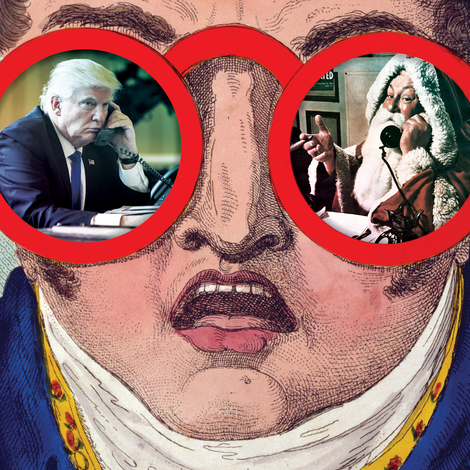“It’s been a manic day,” says the American fashion designer Conner Ives from his studio, in London. His six-person team is still navigating, and reveling in, the aftermath of their recent BFC/Vogue Designer Fashion Fund–award win, which granted them more than $200,000 to support Ives’s eponymous label. “I mean, how could you say no to that?”
Winning the award marks the latest in a series of achievements for the 29-year-old designer, who, since launching his brand in 2021, has styled Met Gala looks for Adwoa Aboah and Ivy Getty, staged multiple runway shows at London Fashion Week, and raised nearly $1 million for an L.G.B.T.Q.+ charity.
“You’ll have these weeks where you’ll go from everything being so quiet to dressing seven girls [for P.R.] in one day, which then leads to about 35 private-client e-mails that come through saying, ‘Oh, I want to buy this dress, but I want it in fluorescent green,” Ives says.
It was one of those crazy days when we spoke. But the chaos doesn’t intimidate Ives, who’s always had a feverish passion for fashion.

Whenever the Bedford, New York, native wasn’t watching the sun set over the Hudson or tuning in to fashion-themed TV programs such as Fashion File and Style Unzipped, he was sketching and sewing his first designs.
By the time he moved to London, at 18, to study fashion at Central Saint Martins, Ives was already ahead of the game—and he had no problem showing it. Before starting his first year, in 2016, Ives was tasked with creating one design for the fashion-school equivalent of summer reading. But he showed up with an entire collection. His professors weren’t pleased, seeing him as a show-off and his designs as unconventional. “I had to really fight for my desire to make a slinky, sexy dress,” he says. “I was never making them for school. I was making them for myself.”
This didn’t discourage Ives. In fact, that summer collection—which included early iterations of his signature T-shirt dress, a mid-length garment made from deadstock, oversize shirts sewn together in panels of two or four—served as a road map for his future label. “They’re all the same formula that I use to this day, obviously improved,” he says.
During his second year at school, Ives took up part-time modeling to make ends meet. “You’re a terrible model, but you’re really good at this,” one casting director told him, referring to the designs he’d posted on his Instagram page. She introduced him to Aboah, a well-known British model who was still up-and-coming at the time. “I want to wear this to the Met Gala,” Aboah told Ives when she saw a sequined dress he had designed in his first year at C.S.M.

Ives, then 20, had only a few months to get ready for the May 2017 event, themed “Rei Kawakubo/Comme des Garçons: Art of the In-Between.” “Here I was, a student living in Tottenham, with friends chipping in, sewing sequins on this dress. It felt like a test. And I think I rose to the occasion,” he says.
He skipped school for two weeks to travel to New York, where Aboah was a dazzling vision in white at the Met. Days later, standing in the security line at J.F.K. to fly back to London, he noticed a new follower on Instagram: Rihanna. “I remember my legs turning into jelly,” he says.
Upon landing, he received a message from the pop singer’s stylist, Jahleel Weaver, filled with words like “obsessed” and “Let’s do something.”
That “something” turned into an in-person meeting a year later at Dover Street Market, where Weaver told Ives that Rihanna was launching a luxury-fashion brand in partnership with LVMH—and that they wanted him on the inaugural design team. “I was 22 then, still trying to understand what was going on.”

At C.S.M., students are given a “year in industry” to gain real-world experience. Instead of getting an internship, Ives spent time working at what would soon become Rihanna’s now shuttered Fenty. “It was a crash course on how to start a label, prior to properly launching my own,” he explains.
In 2021, just a year after graduating from school, he went solo. “At first, I was unsure how to take a stand with my work,” he says. “I didn’t want the brand to be self-serving.”
When Donald Trump was elected for a second term, he recalls, “I just started to feel really uncomfortable with the state of the world, and helpless. And I didn’t know what to say.” Soon his designs became intertwined with politics.
Ives made his political stance public this February, closing out his fall 2025 runway show at London Fashion Week wearing a T-shirt with the slogan Protect the Dolls, to show solidarity with trans women. Reporters interviewed him backstage, and by morning the runway moment had gone viral on social media.

Speaking about his friends Alex Consani and Hunter Pifer, both trans models, Ives says: “Those girls gave fashion the personality it had been missing. Watching them reminded me of fashion-TV icons [of the past] who had massive personalities. They walk into a room, and you just fall in love with them. They reminded me of why I was doing all of this in the first place.”
The day after the February show, Ives launched a pre-order for the T-shirt, selling it for $99 and donating all proceeds to Trans Lifeline, an American nonprofit that supports the trans community. The shirt, worn by stars including Pedro Pascal and Troye Sivan, put Ives’s name on the map like never before.
Four months and a major fashion award later, Ives is reflecting on what’s next for his career. “I don’t want to be a flash in the pan,” he says. “I want to build a company that lasts.”
Carolina de Armas is a Junior Editor at Air Mail


